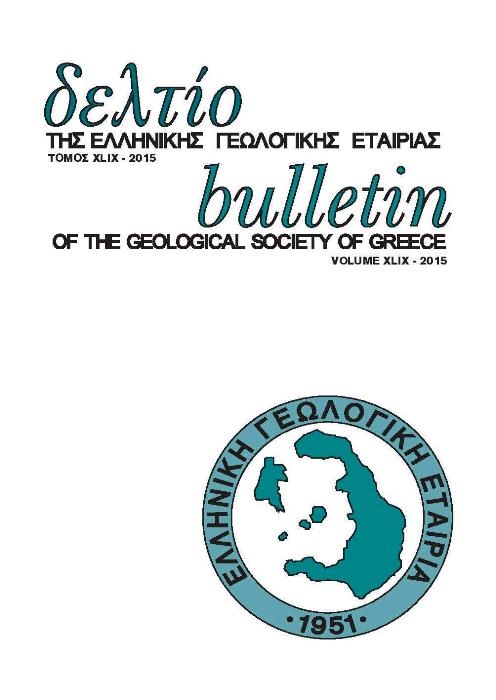Laboratory testing properties of sandstones

Abstract
The aim of this paper is to determine the geotechnical properties of clastic sedimentary rocks and especially sandstones which constitute a great part of the flysch formation. Laboratory tests were conducted in samples collected from different sites in western Greece. Physical and mechanical properties were determined including porosity (n), dry density (pf), sound velocities (Vp, Vs), point loading strength (IS(so)) and uniaxial compressive strength (ac). Additionally, the material constant m„ an input parameter for the Hoek and Brown failure criterion, was estimated by analyzing the results from a series of triaxial compression tests under different confining pressures. Regression analyses were also applied to define the relations among the obtained parameters
Article Details
- How to Cite
-
Koukis, G., Sabatakakis, N., & Papanakli, S. (2007). Laboratory testing properties of sandstones. Bulletin of the Geological Society of Greece, 40(4), 1695–1702. https://doi.org/10.12681/bgsg.17083
- Section
- Engineering Works and Geological Applications

This work is licensed under a Creative Commons Attribution-NonCommercial 4.0 International License.
Authors who publish with this journal agree to the following terms:
Authors retain copyright and grant the journal right of first publication with the work simultaneously licensed under a Creative Commons Attribution Non-Commercial License that allows others to share the work with an acknowledgement of the work's authorship and initial publication in this journal.
Authors are able to enter into separate, additional contractual arrangements for the non-exclusive distribution of the journal's published version of the work (e.g. post it to an institutional repository or publish it in a book), with an acknowledgement of its initial publication in this journal. Authors are permitted and encouraged to post their work online (preferably in institutional repositories or on their website) prior to and during the submission process, as it can lead to productive exchanges, as well as earlier and greater citation of published work.






